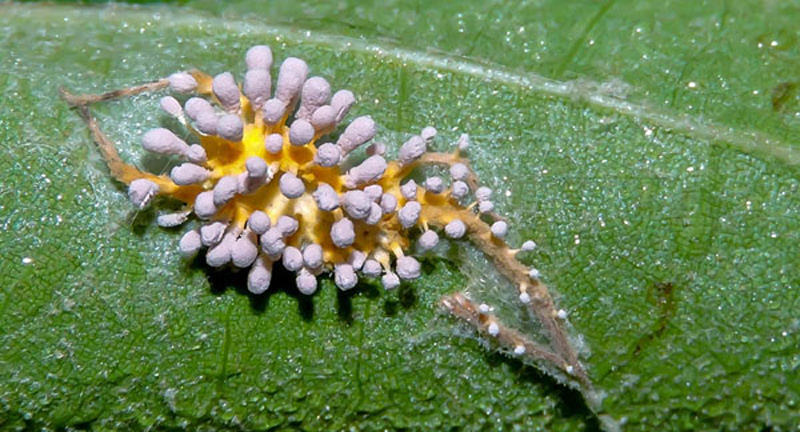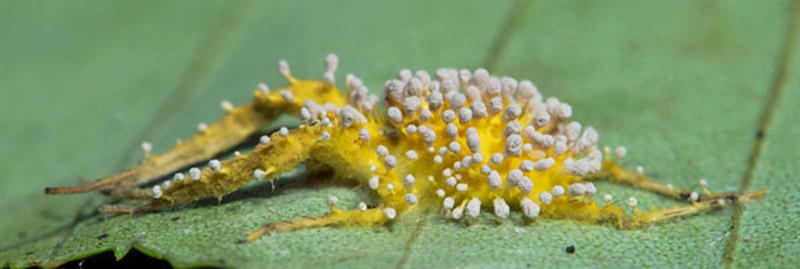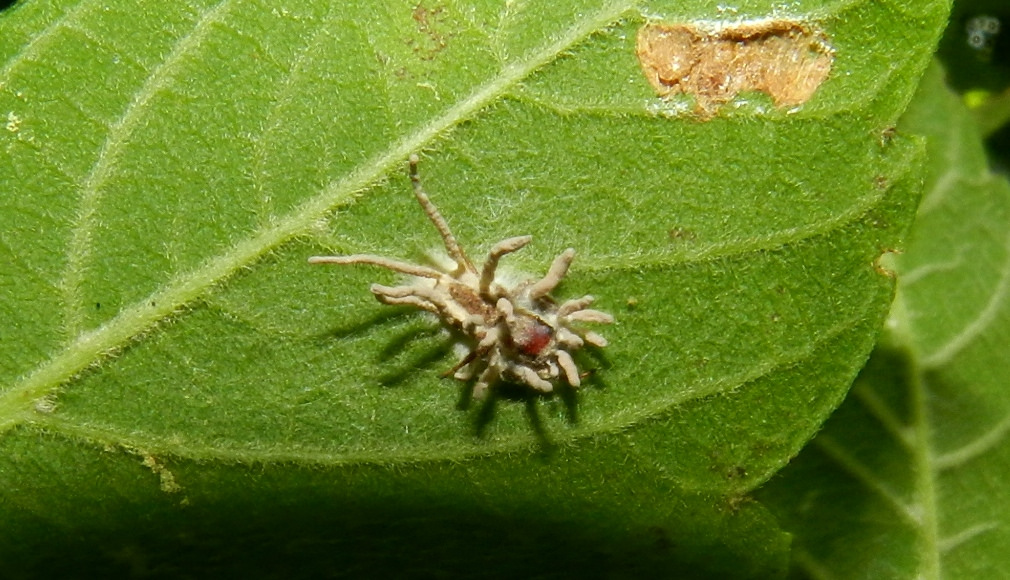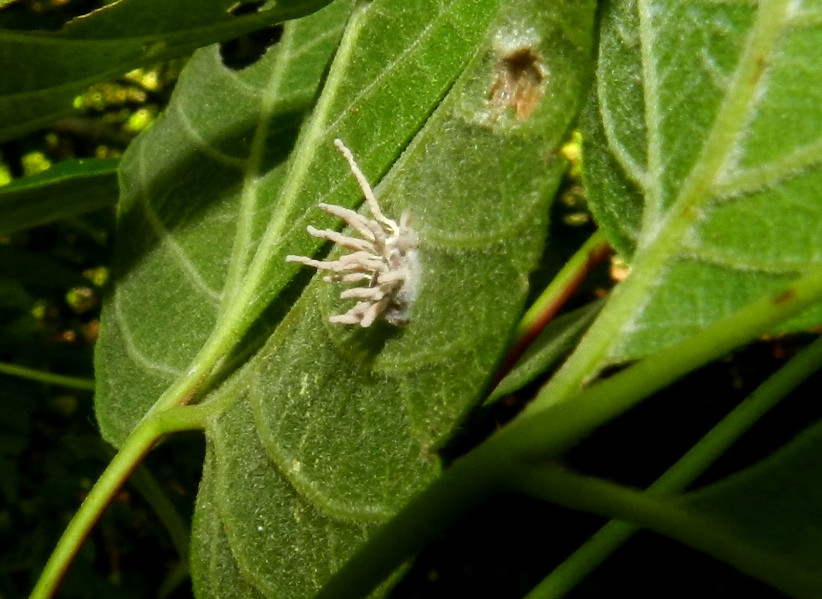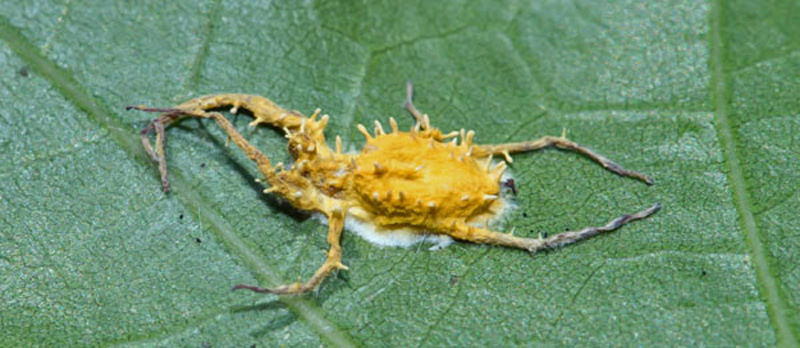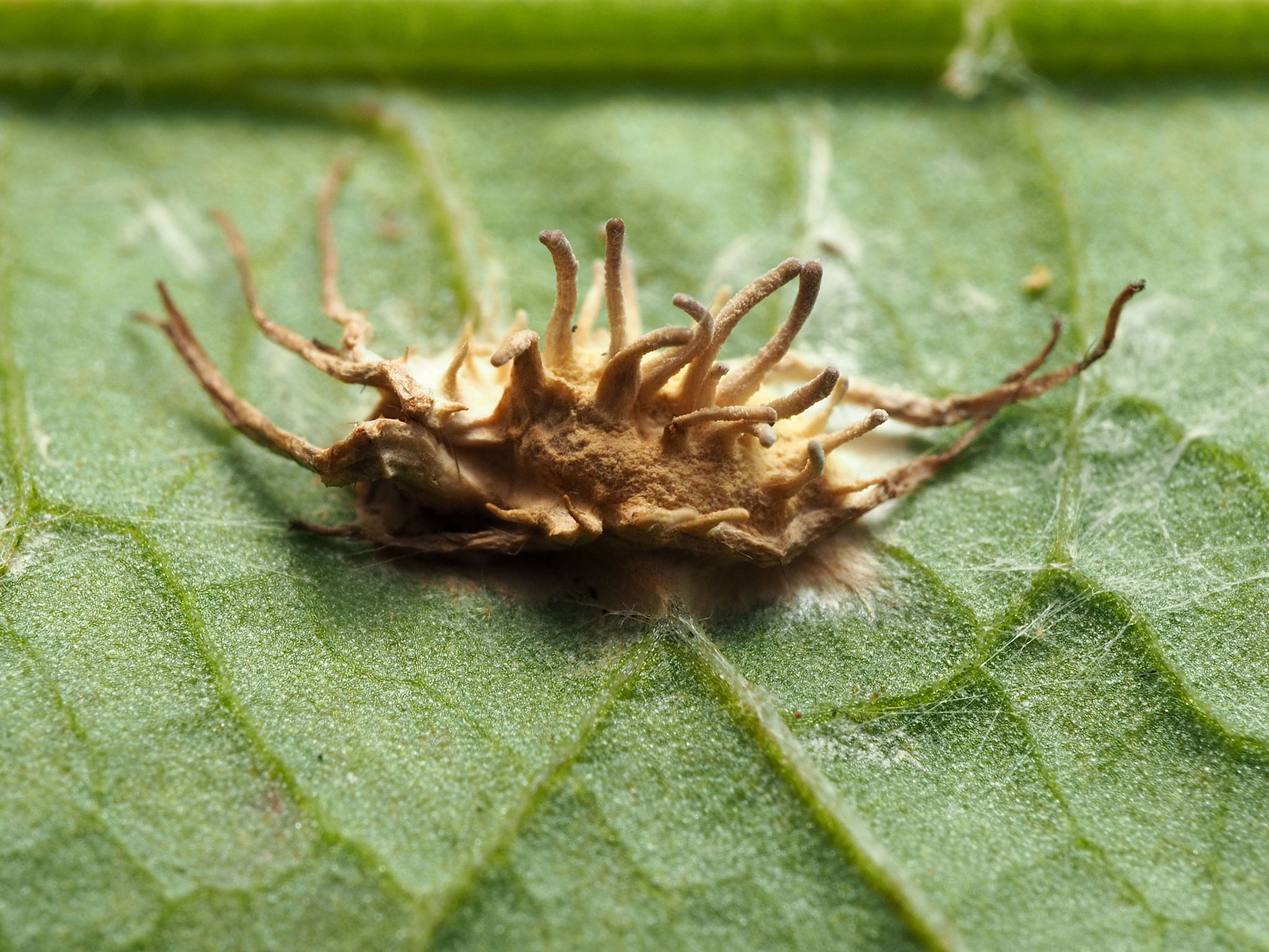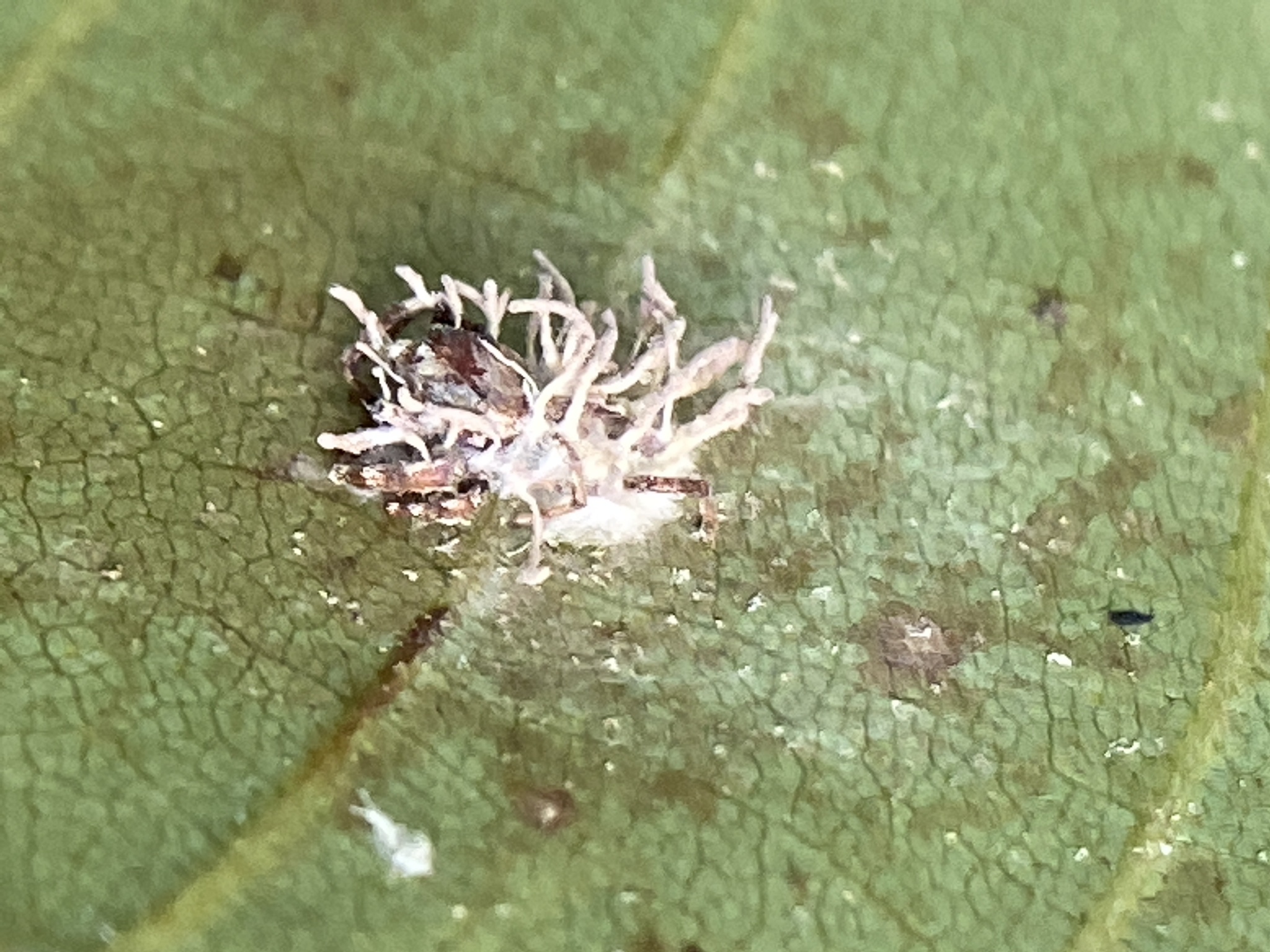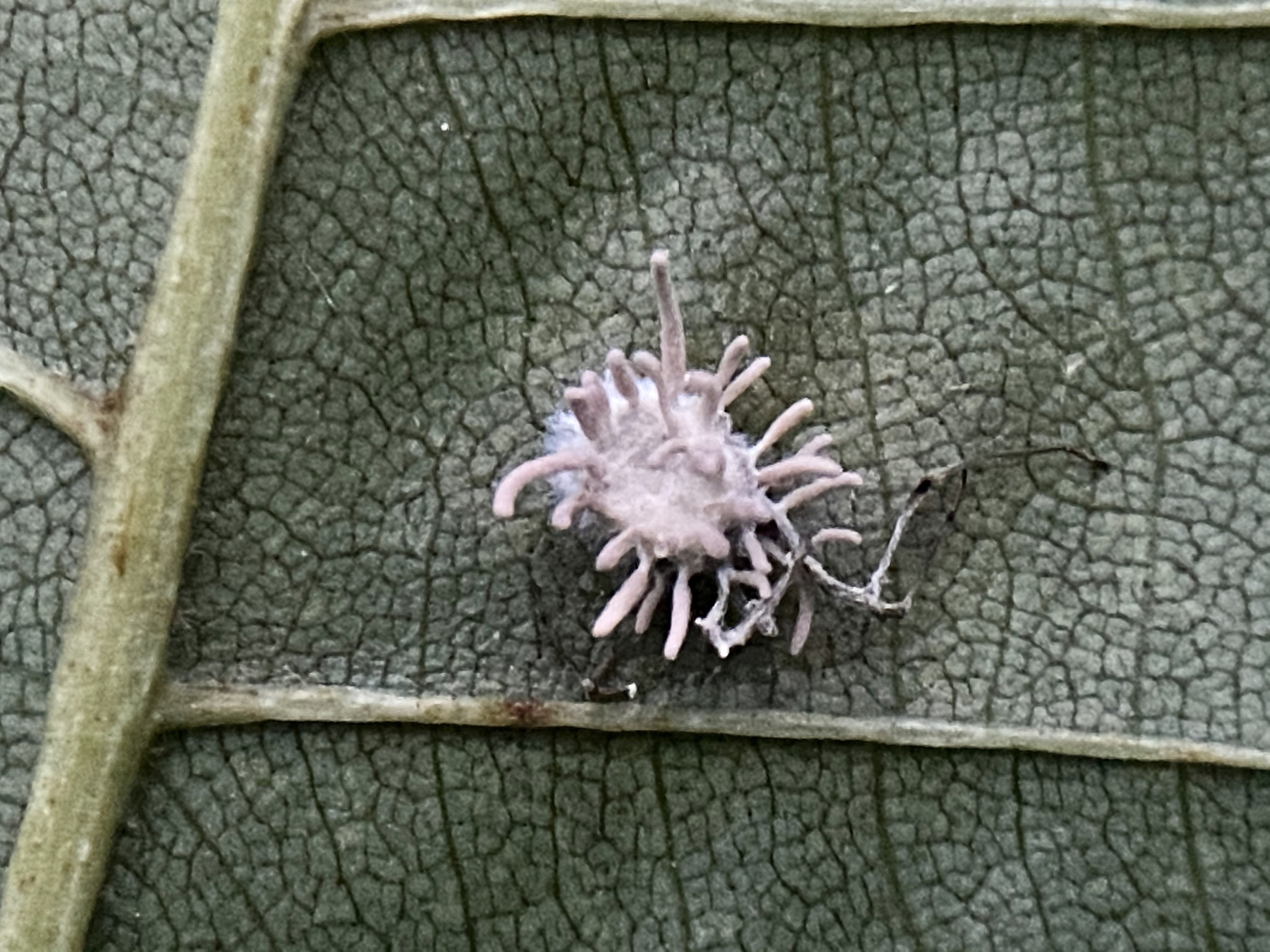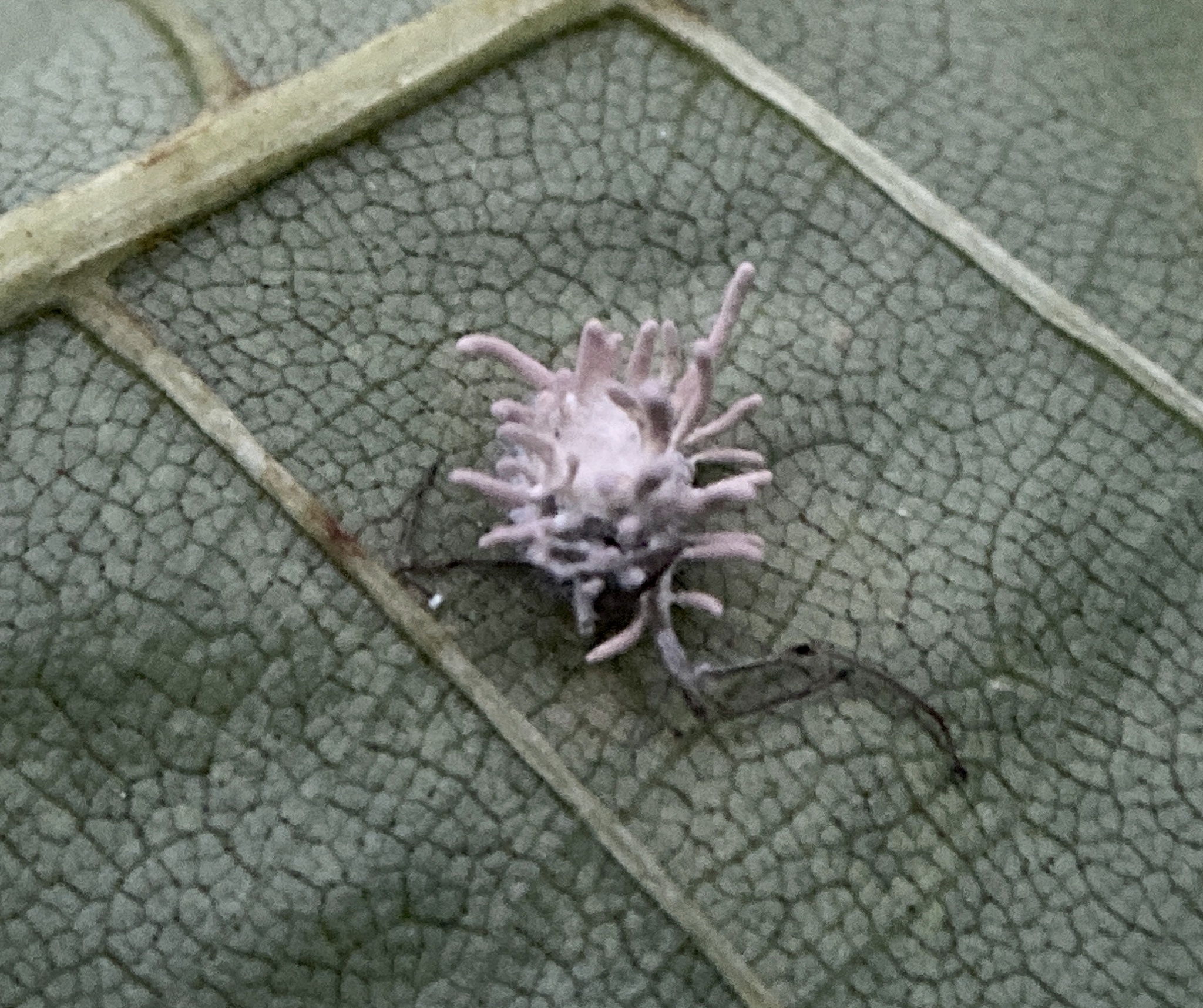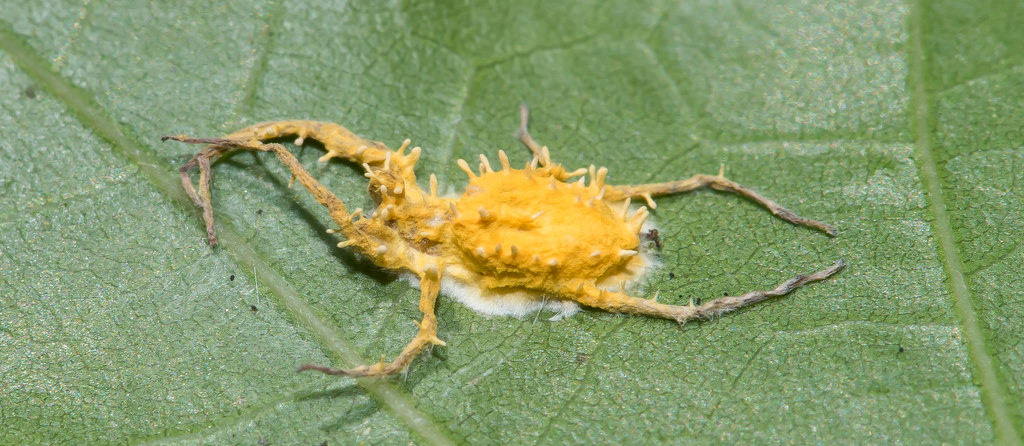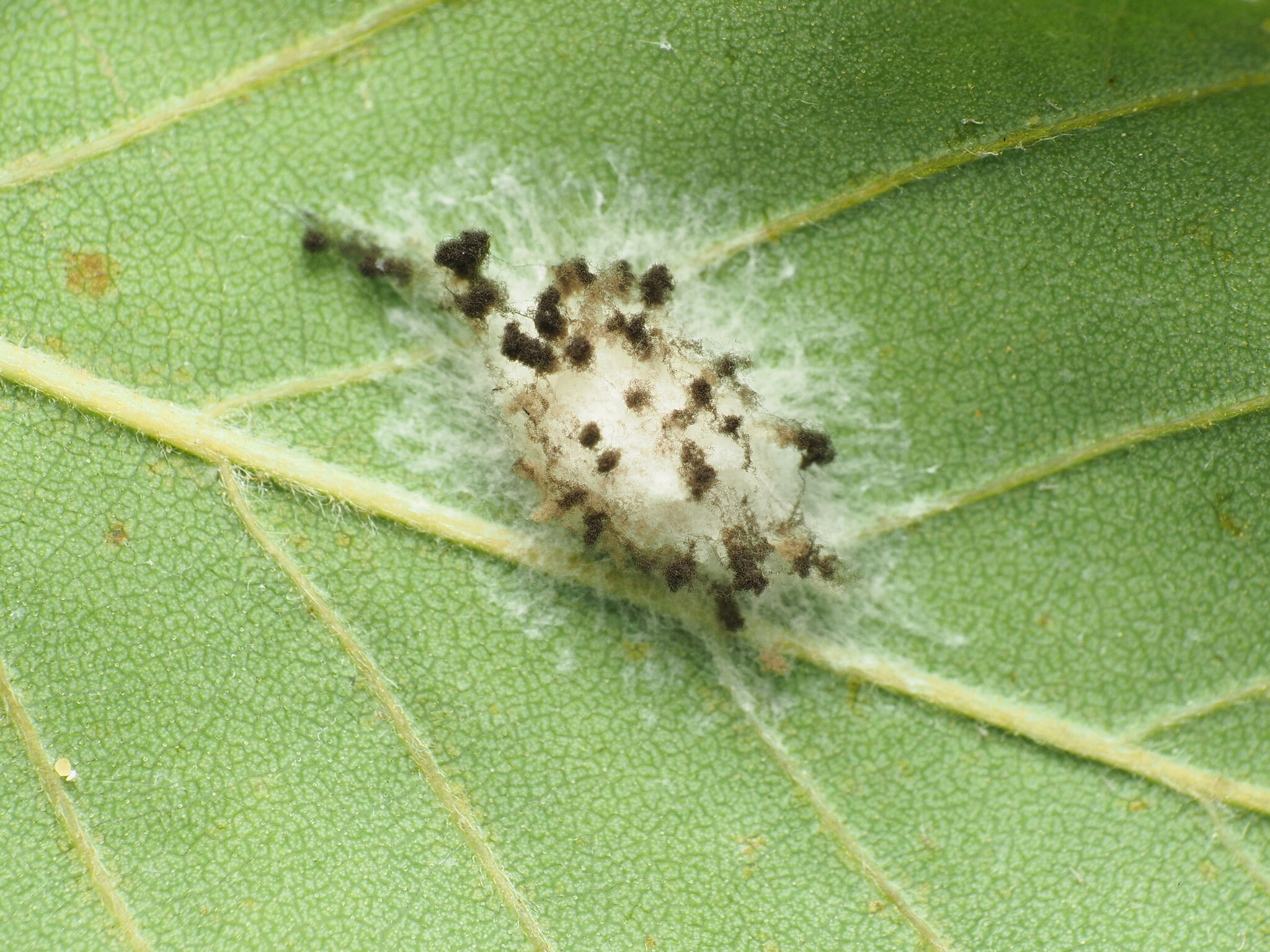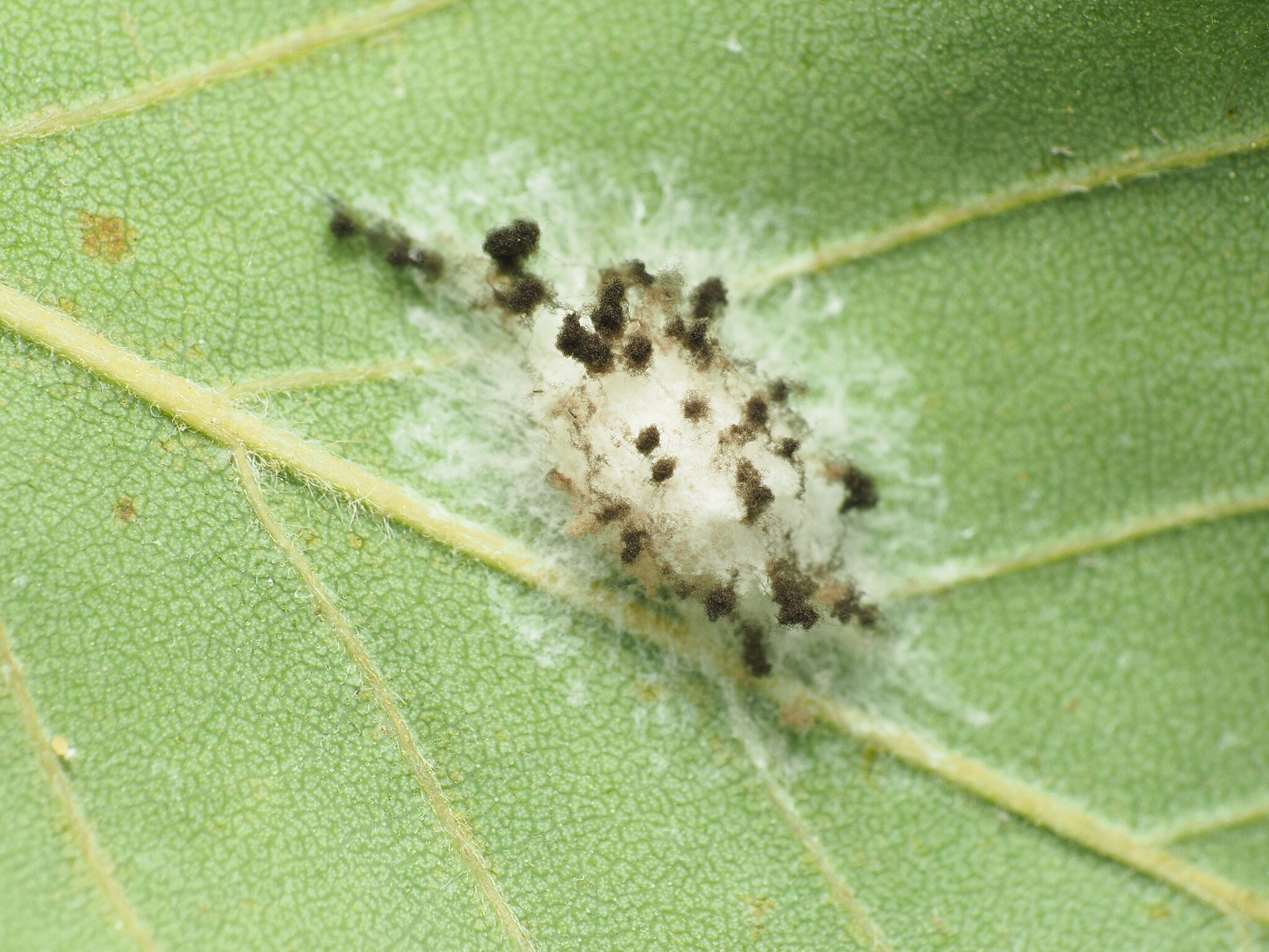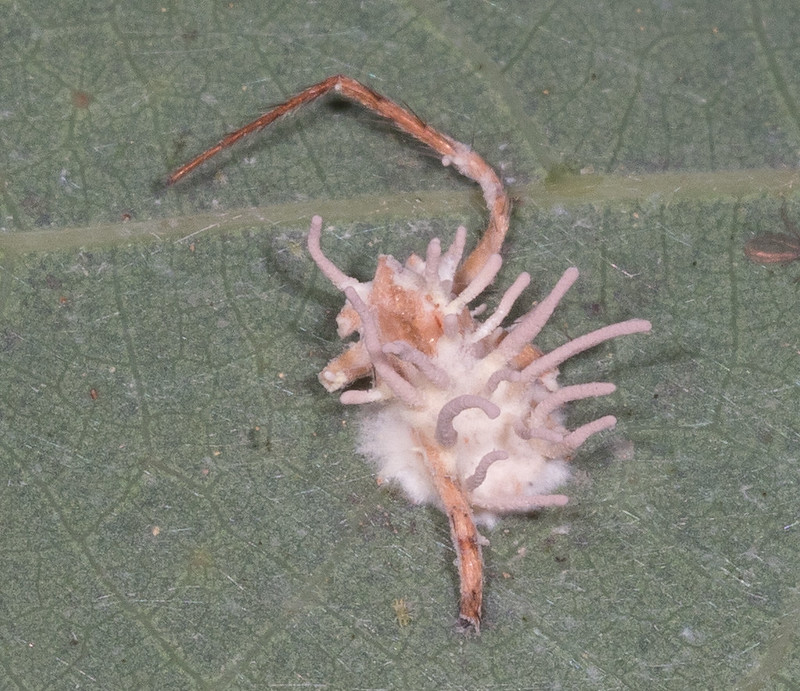Map Snapshot









24 Records
Status
This fungus has two forms: the teleomorph form which has one name (Torrubiella) and the anamorphic stage (Gibellula) (J. Solem, pers. comm.).
Description
Fruiting body: Light-colored spikes with a fuzzy ball at one end (J. Solem, pers. comm.).
Where To Find
Habitat: Bodies of spiders (Araneae) (J. Solem, pers. comm.).
Seasonality Snapshot
Eating mushrooms can be dangerous. One should do so only with expert advice and great care. MBP accepts no liability for injury sustained in consuming fungi or other biodiversity. Use of media featured on Maryland Biodiversity Project is only permitted with express permission of the photographer.
A spider infected by a Gibellula species in Howard Co., Maryland (9/6/2014). Determined by Jo and Bob Solem.
View Record Details
Media by
Bonnie Ott.
Gibellula species in Frederick Co., Maryland (10/10/2020). (c) Emilio Concari, some rights reserved (CC BY-NC).
View Record Details
Media by
Emilio Concari.
A spider infected by a Gibellula species in Howard Co., Maryland (6/26/2015). Determined by Jo and Bob Solem.
View Record Details
Media by
Bonnie Ott.
Gibellula (possibly pulchra) growing out of a jumping spider carcass in Howard Co., Maryland (7/31/2014). Determined by Lance Biechele.
Media by
Nancy Magnusson.
Gibellula (possibly pulchra) growing out of a jumping spider carcass in Howard Co., Maryland (7/31/2014). Determined by Lance Biechele.
Media by
Nancy Magnusson.
A spider infected by a Gibellula species in Howard Co., Maryland (6/29/2016). Determined by Jo and Bob Solem.
View Record Details
Media by
Bonnie Ott.
Gibellula species in Montgomery Co., Maryland (7/3/2020). (c) Katja Schulz, some rights reserved (CC BY).
View Record Details
Media by
Katja Schulz via iNaturalist.
Gibellula species in Montgomery Co., Maryland (7/3/2020). (c) Katja Schulz, some rights reserved (CC BY).
View Record Details
Media by
Katja Schulz via iNaturalist.
Gibellula species in Montgomery Co., Maryland (8/23/2020). (c) Emily Summerbell, some rights reserved (CC BY-NC).
View Record Details
Media by
Emily Summerbell, Ph.D. via iNaturalist.
Gibellula species in Montgomery Co., Maryland (8/15/2020). (c) Emily Summerbell, some rights reserved (CC BY-NC).
View Record Details
Media by
Emily Summerbell, Ph.D. via iNaturalist.
Gibellula species in Montgomery Co., Maryland (8/15/2020). (c) Emily Summerbell, some rights reserved (CC BY-NC).
View Record Details
Media by
Emily Summerbell, Ph.D. via iNaturalist.
A Gibellula species in Howard Co., Maryland (6/29/2016).
View Record Details
Media by
Bonnie Ott.
A Gibellula species in Howard Co., Maryland (6/29/2016).
View Record Details
Media by
Bonnie Ott.
Gibellula species in Montgomery Co., Maryland (6/4/2023). (c) Katja Schulz, some rights reserved (CC BY).
View Record Details
Media by
Katja Schulz via iNaturalist.
Gibellula species in Montgomery Co., Maryland (6/4/2023). (c) Katja Schulz, some rights reserved (CC BY).
View Record Details
Media by
Katja Schulz via iNaturalist.
Gibellula sp. in Frederick Co., Maryland (9/4/2022).
View Record Details
Media by
Jim Moore.
Source: Wikipedia
| Gibellula | |
|---|---|

| |
| Gibellula pulchra | |
| Scientific classification | |
| Domain: | Eukaryota |
| Kingdom: | Fungi |
| Division: | Ascomycota |
| Class: | Sordariomycetes |
| Order: | Hypocreales |
| Family: | Cordycipitaceae |
| Genus: | Gibellula Cavara (1894) |
Gibellula is a genus of parasitic fungi which attacks arachnids.[1]
The genus Gibellula was named after Giuseppe Gibelli.[2][3][4]
Species
[edit]- Gibellula alata[5]
- Gibellula arachnophila[5]
- Gibellula aranearum[5]
- Gibellula attenboroughii[6]
- Gibellula clavata[5]
- Gibellula clavulifera[5]
- Gibellula dabieshanensis[5]
- Gibellula dimorpha[5]
- Gibellula eximia[5]
- Gibellula leiopus[5][7]
- Gibellula pulchra[5]
References
[edit]- ^ Kuephadungphan, Wilawan; Tasanathai, Kanoksri; Petcharad, Booppa; Khonsanit, Artit; Stadler, Marc; Luangsa-Ard, J. Jennifer (2020). "Phylogeny- and morphology-based recognition of new species in the spider-parasitic genus Gibellula (Hypocreales, Cordycipitaceae) from Thailand". MycoKeys (72): 17–42. doi:10.3897/mycokeys.72.55088. PMC 7481265. PMID 32963487.
- ^ Mains, E. B. (1950). "The Genus Gibellula on Spiders in North America". Mycologia. 42 (2): 306–321. doi:10.2307/3755445. ISSN 0027-5514. JSTOR 3755445.
- ^ CAVARA, F. (1894). "Ulteriore contribuzione alla micologia lombarda". Atti dell'Istituto botanico della Università di Pavia. 2 (3): 313–350. doi:10.1080/11263505109431526.
- ^ Burkhardt, Lotte (2022). Eine Enzyklopädie zu eponymischen Pflanzennamen [Encyclopedia of eponymic plant names] (pdf) (in German). Berlin: Botanic Garden and Botanical Museum, Freie Universität Berlin. doi:10.3372/epolist2022. ISBN 978-3-946292-41-8. S2CID 246307410. Retrieved January 27, 2022.
- ^ a b c d e f g h i j Mendes-Pereira, Thairine; de Araújo, João Paulo Machado; Kloss, Thiago Gechel; Costa-Rezende, Diogo Henrique; de Carvalho, Daniel Santana; Góes-Neto, Aristóteles (2023-04-08). "Disentangling the Taxonomy, Systematics, and Life History of the Spider-Parasitic Fungus Gibellula (Cordycipitaceae, Hypocreales)". Journal of Fungi. 9 (4): 457. doi:10.3390/jof9040457. ISSN 2309-608X. PMC 10146611. PMID 37108911.
- ^ Evans, H.C.; Fogg, T.; Buddie, A.G.; Yeap, Y.T.; Araújo, J.P.M. (2025). "The araneopathogenic genus Gibellula (Cordycipitaceae: Hypocreales) in the British Isles, including a new zombie species on orb-weaving cave spiders (Metainae: Tetragnathidae)". Fungal Systematics and Evolution. doi:10.3114/fuse.2025.15.07. ISSN 2589-3823.
- ^ Kubátová, Alena (2004). "The arachnogenous fungus Gibellula leiopus - second find from the Czech Republic" (PDF). Czech Mycology.
